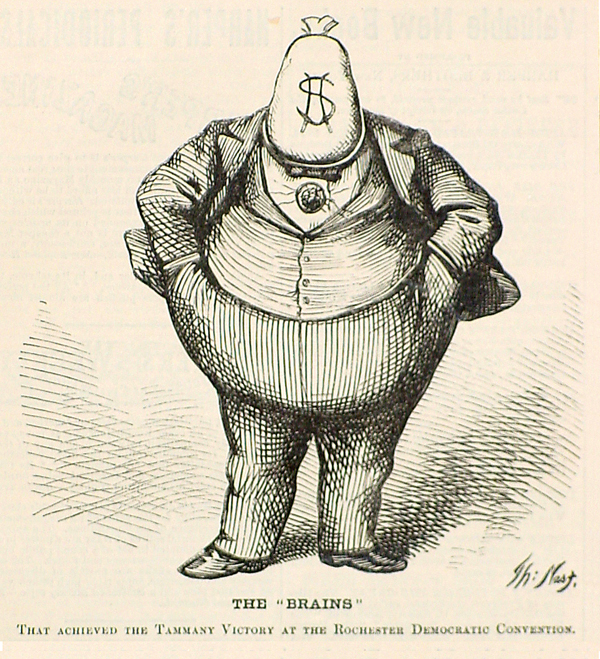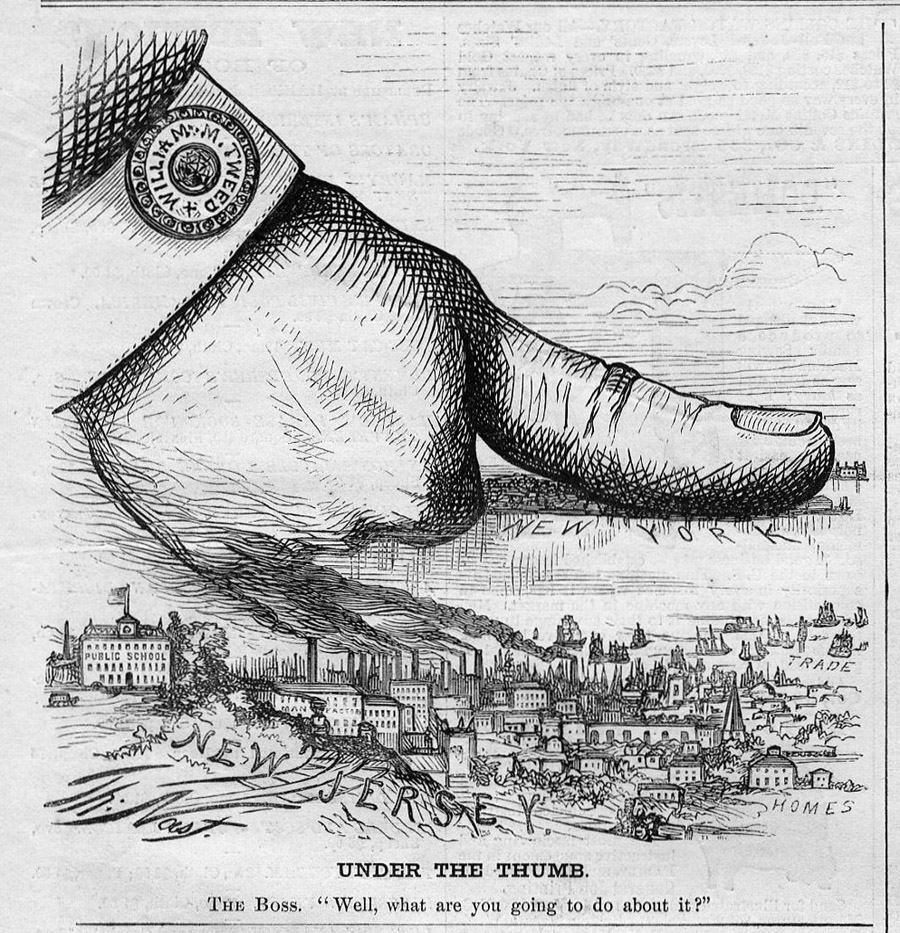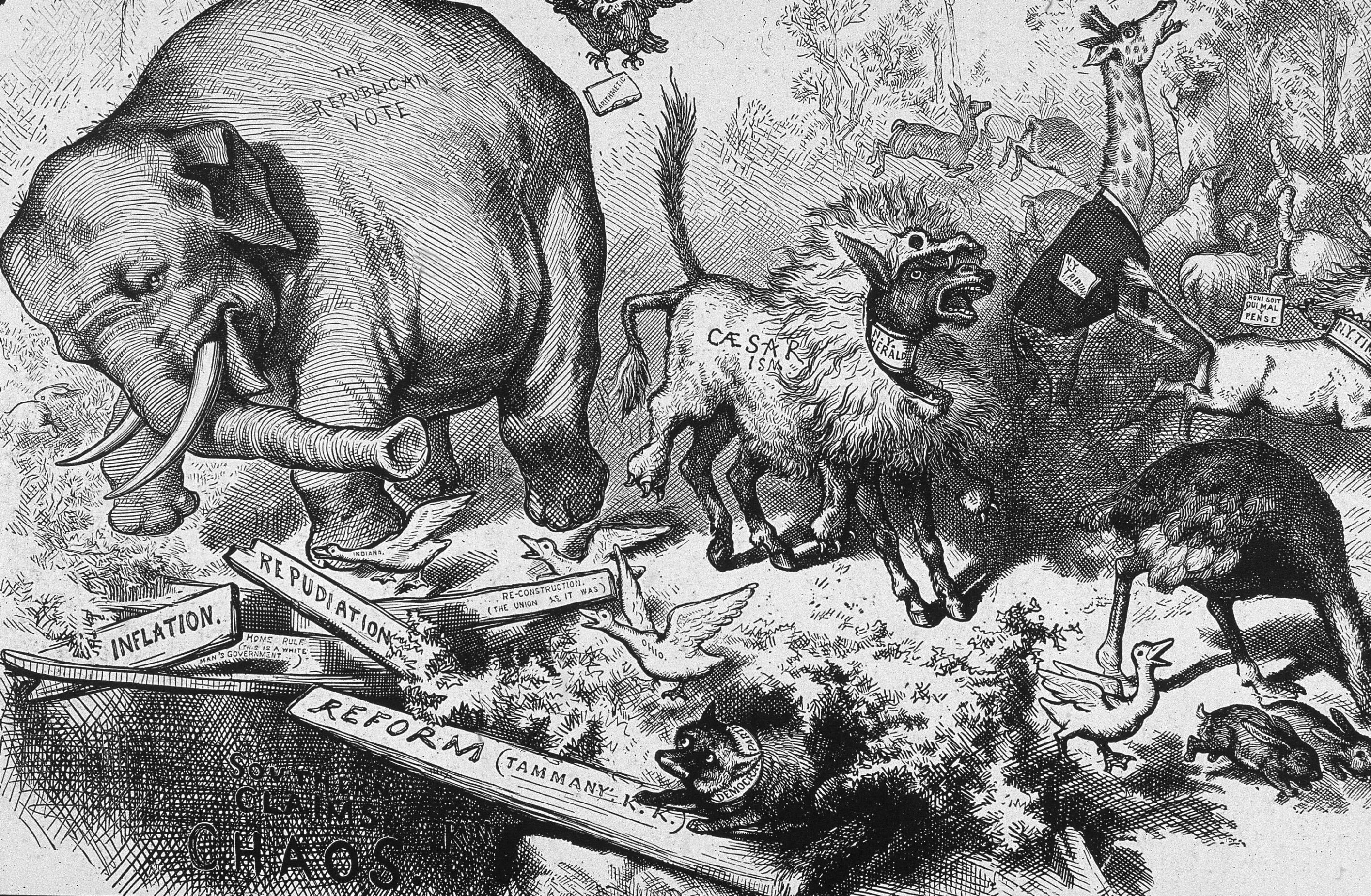Thomas Nast

Thomas Nast, born in 1840 in Germany and raised in New York City, became one of the most influential political cartoonists in American history. By the time he was a teenager, he was illustrating for major publications, and by the Civil War, his images in Harper’s Weekly helped shape Northern support for the Union cause and abolition. Nast understood the power of pictures to stir emotion and drive political action. His cartoons didn’t just reflect the times, they helped shape them.

Nast’s pen became a weapon against corruption, most famously targeting William 'Boss' Tweed and the Tammany Hall political machine in New York. At a time when many Americans were illiterate, Nast’s sharp, satirical illustrations did what editorials couldn’t: they made corruption visible. His relentless visual assault helped fuel Tweed’s downfall, proving that art—especially when seen by millions—could hold the powerful accountable.

As the so-called 'Father of the American Cartoon,' Nast created symbols still etched in the national imagination. He popularized the Democratic donkey, the Republican elephant, and the modern image of Santa Claus. But like many historical figures, Nast was complex. While his work advanced anti-slavery causes and democratic accountability, he also produced caricatures that reinforced anti-Irish and anti-Catholic stereotypes, reflecting the nativist biases of his time.

During his 25-year career at Harper’s Weekly, Nast published over 2,000 illustrations and transformed the role of media in public life. His double-page spreads, packed with allegory and razor-sharp detail, reached hundreds of thousands of readers, effectively creating a national visual vocabulary. In an age before television or the internet, Thomas Nast proved that a single image, well-drawn and widely seen, could change the course of history.

?
What made Thomas Nast’s cartoons so effective in exposing political corruption?
How did his drawings influence the outcome of key elections?
What role did Nast’s immigrant background play in shaping his viewpoint?
Why do you think his symbols—like the donkey and elephant—still matter in politics today?
How did Nast support the Civil War’s Union cause through his artwork?
What can we learn about propaganda, humor, and social commentary from Nast’s cartoons?
Dig Deeper
Thomas Nast: Nast is sometimes called the "Father of American Cartoons" as he was very influential in the mid to late 1800s with his illustrations of the American Civil War and Reconstruction politics.
Discover more

Jacob Lawrence
Jacob Lawrence showed how art can bring hidden histories to life, that each person’s story matters and can reshape the way we see the world. His work reminds us that art is a witness, a teacher, and a vessel for truth.

Yayoi Kusama
Yayoi Kusama teaches us that even the most private pain can bloom into something cosmic. Her dots don’t just decorate, they dissolve boundaries, inviting us to lose ourselves and find something bigger: connection, healing, infinity. In her world, vulnerability isn’t weakness, it’s the gateway to wonder.

Otto Dix
Otto Dix painted the madness others refused to see. His work doesn’t glorify war—it tears it open. With surgical detail and moral rage, he created images that continue to haunt, disturb, and confront. Dix reminds us that the artist’s duty is not just to make beauty, but to tell the truth—even when the truth is hideous.
Further Reading
Stay curious!
